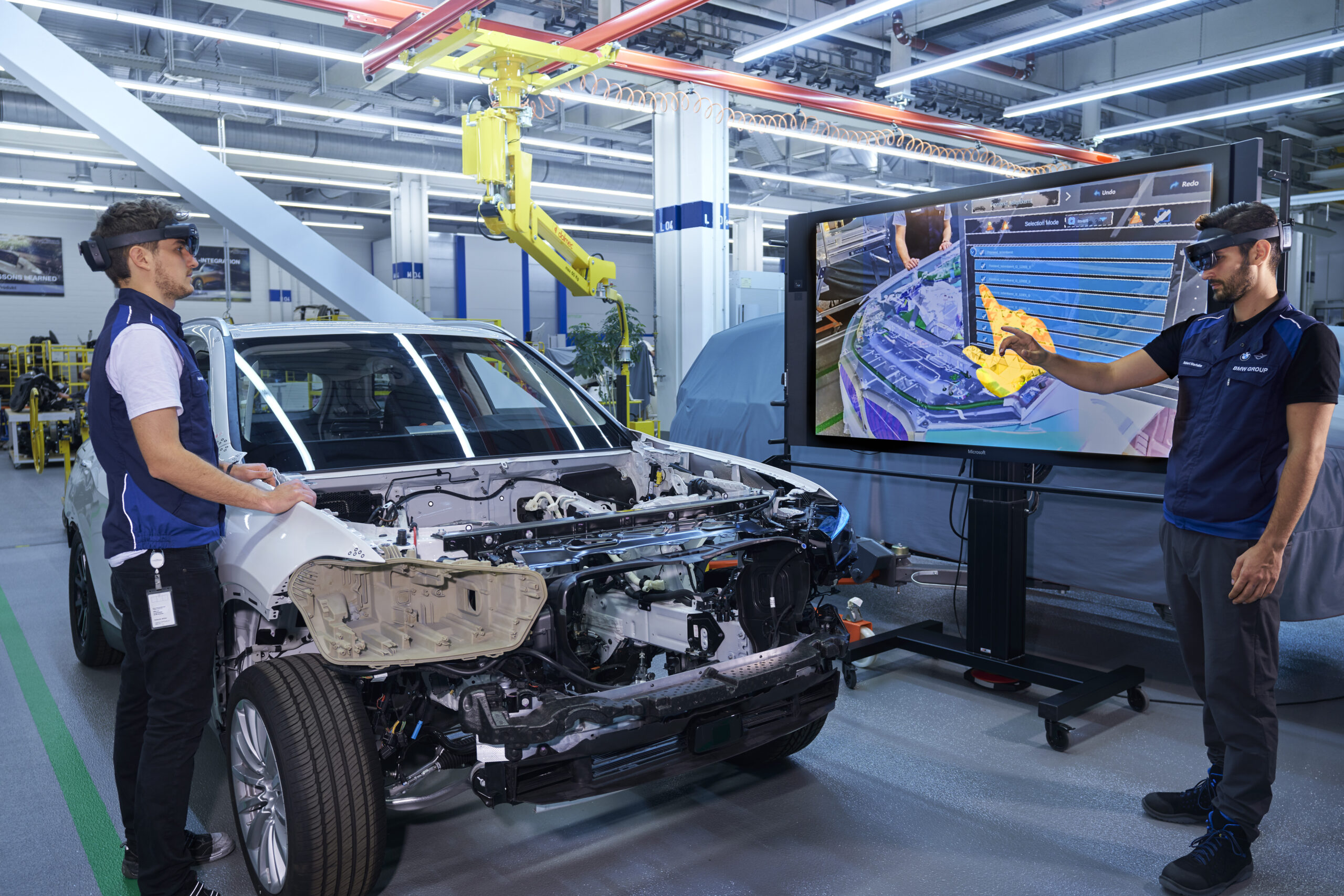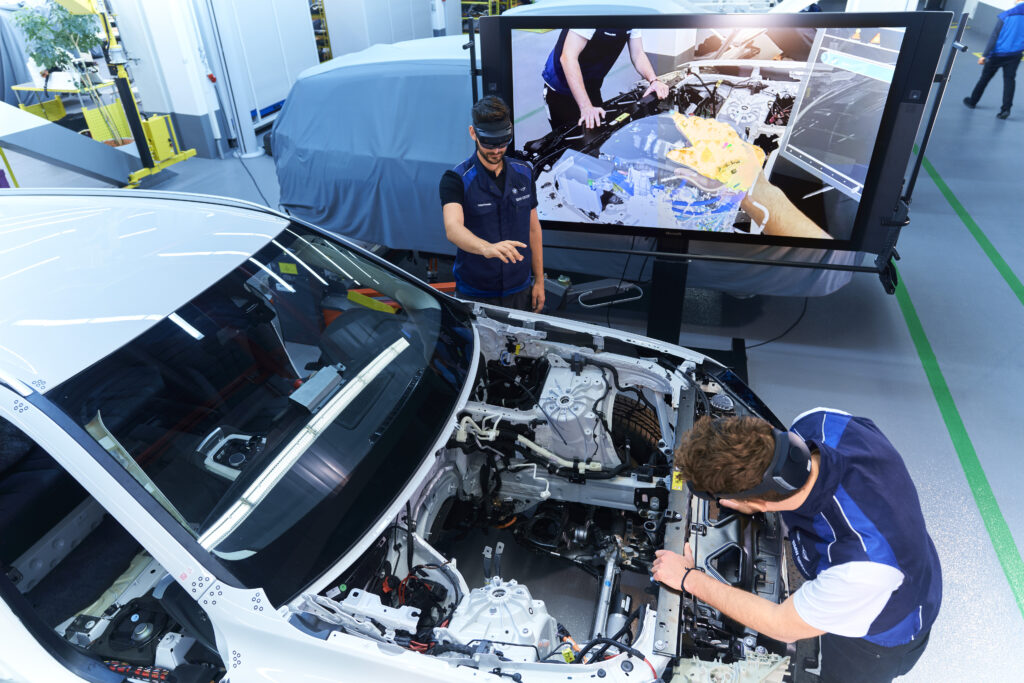BMW Group Uses AR 3S Pro in Prototyping
Time Savings of up to One Year
The car manufacturer BMW uses AR 3S (Augmented Reality Engineering Space) at its Munich headquarters to speed up processes by as much as twelve months, from individual vehicle sections through to complex production stages. Engineers can verify assembly processes at an early stage and adjust them for series production.

Shorter development cycles through seamless digital design processes. At the Munich pilot plant, the BMW Group tests the development of vehicle concepts and prototypes by using the latest technologies. Running on Microsoft´s HoloLens 2 data goggles the AR Engineering Software AR 3S from Holo-Light allows real geometries – on a vehicle body, for instance – to be overlaid with true-to-scale holographic 3D models, so a range of concept variants and assembly processes for future series vehicles can be assessed flexibly and cost-efficiently.
“The AR goggles and CAD data allow us to find out much faster, whether the production worker will be able to fit the component properly later on, in series production. That way, we need far fewer test setups.”
Michael Schneider, Head of Complete Vehicle at the BMW Pilot Plant Munich
Vehicle Concepts Visualized in 3D
Vehicles and their components are visualized via the AR Software AR 3S Pro, which is linked to the BMW Group’s product data management system. The integrated remote rendering technology ISAR enables streaming of the entire AR application. This means that the computing power does not have to come from the AR glasses themselves, but can be provided from the cloud or a high-performance, own controlled server. The data also never resides on the mobile device. A crucial security feature in the event of loss of the glasses or hacker attacks.
In the new workflow the vehicle expert loads CAD files of components from the web-based database into the AR 3S application. Using AR glasses, he can visualize the CAD data in 3D and their original size in a realistic environment. The AR application is controlled by hand, allowing direct interaction with virtual components.
With the AR application, a simple hand movement is enough to modify not only the size but also the position and angle of components. In addition, cross-sections can be created in real time to provide a view of the vehicle’s inner structures. Another advantage is the collaborative working: people at different locations around the world can now employ multi-user mode to team up and review designs and concepts together, and identify any errors.
“Another key advantage is that it saves us time and money when we integrate new vehicles into production.”
Christoph Leibetseder, Head of Digitalization, Prototyping and Measurement Technologies at the BMW Pilot Plant Munich

Newly Gained Efficiency Factor with Augmented Reality
Using true-to-scale visualization and interaction with concepts and prototypes previously created in CAD programs, engineers can now immediately understand the accessibility, installation options and visibility of relevant assembly points in complex systems. Above all, the superimposition of real geometry with holographic 3D models enables them to evaluate different variants of a concept in minutes. The BMW Group has thus achieved time savings of up to one year on vehicle module validation.
Source: BMW Group



